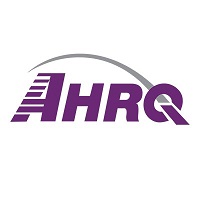 By Cindy Brach, MPP, Senior Health Care Researcher &
By Cindy Brach, MPP, Senior Health Care Researcher &
Janice Genevro, PhD, Health Scientist in AHRQ’s Center for Evidence and Practice Improvement
Twitter: @AHRQNews
Consistent with AHRQ’s mission of making sure that research evidence is understood and used to improve health care, AHRQ has released EvidenceNOW Tools for Change. This carefully curated online collection of more than 100 tools and resources can help primary care practices in their ongoing efforts to improve quality by providing evidence-based care to their patients.
The Tools for Change resource is one important outgrowth of AHRQ’s EvidenceNow initiative, a project launched in 2015 that used practice facilitators (practice improvement coaches) to work with more than 1,500 small- and medium-sized primary care practices nationwide.
Here’s one example of the initiative’s impact: Research shows that smokers who get counseling from their doctors are twice as likely to quit as those who don’t. With that evidence in mind, and with assistance from EvidenceNow, a small practice in Oregon changed its electronic health records to track how many smokers got counseling. Using that data to drive improvement, the practice increased the percentage of smokers counseled from 12 percent to 70 percent!
AHRQ has learned a great deal from EvidenceNOW about what it takes for practices to make that kind of improvement. In order to share what has been learned with everyone, we teamed up with the EvidenceNOW cooperatives and national evaluators, as well as the practice facilitators who directly coached EvidenceNOW practices, to develop a quality improvement framework. The framework—the EvidenceNOW Key Driver Diagram—consists of the following six big changes (i.e., key drivers) that practices need to make to increase their capacity to use evidence.
- Seek, select, and customize the best evidence for use by the practice.
- Implement a data-driven quality improvement process to integrate evidence into practice procedures.
- Optimize information systems to extract data and support use of evidence in practice.
- Create and support high functioning teams to deliver high-quality evidence-based care.
- Engage patients and families in evidence-based care and quality improvement.
- Nurture leadership and create a culture of continuous learning and evidence-based practice.
It is not enough, however, to know what needs to change. Practices need to know how to make the changes. So the AHRQ team asked EvidenceNOW grantees to nominate tools and resources that they found most successful in helping practices with the EvidenceNOW strategies. The AHRQ EvidenceNOW Team also identified tools and resources that emerged from years of quality improvement initiatives. AHRQ staff and external experts in primary care improvement pored over hundreds of nominations to select the best tools and resources.
In some cases, practices with experience in quality improvement activities will be able to search Tools for Change and implement strategies on their own. However, many practices—especially smaller practices like those who participated in EvidenceNOW—may require assistance from practice facilitators or other quality improvement specialists as they pursue new initiatives in quality improvement.
It is our hope that primary care practices and those who assist them in their quality improvement work will benefit greatly from the resources available in Tools for Change. These include, for example, tools on how to optimize communication within care teams and how to conduct motivational interviewing with patients. The Tools for Change resource also includes a section just for practice facilitators who will find a wide variety of tools designed to help them in their work to support practices.
Tools for Change is just one aspect of what AHRQ and the EvidenceNOW grantees are learning and sharing with the field. Stay tuned to EvidenceNOW for results from the local and national evaluations and more information about using evidence to improve care.
This article was originally published on AHRQ Views Blog and is republished here with permission.
